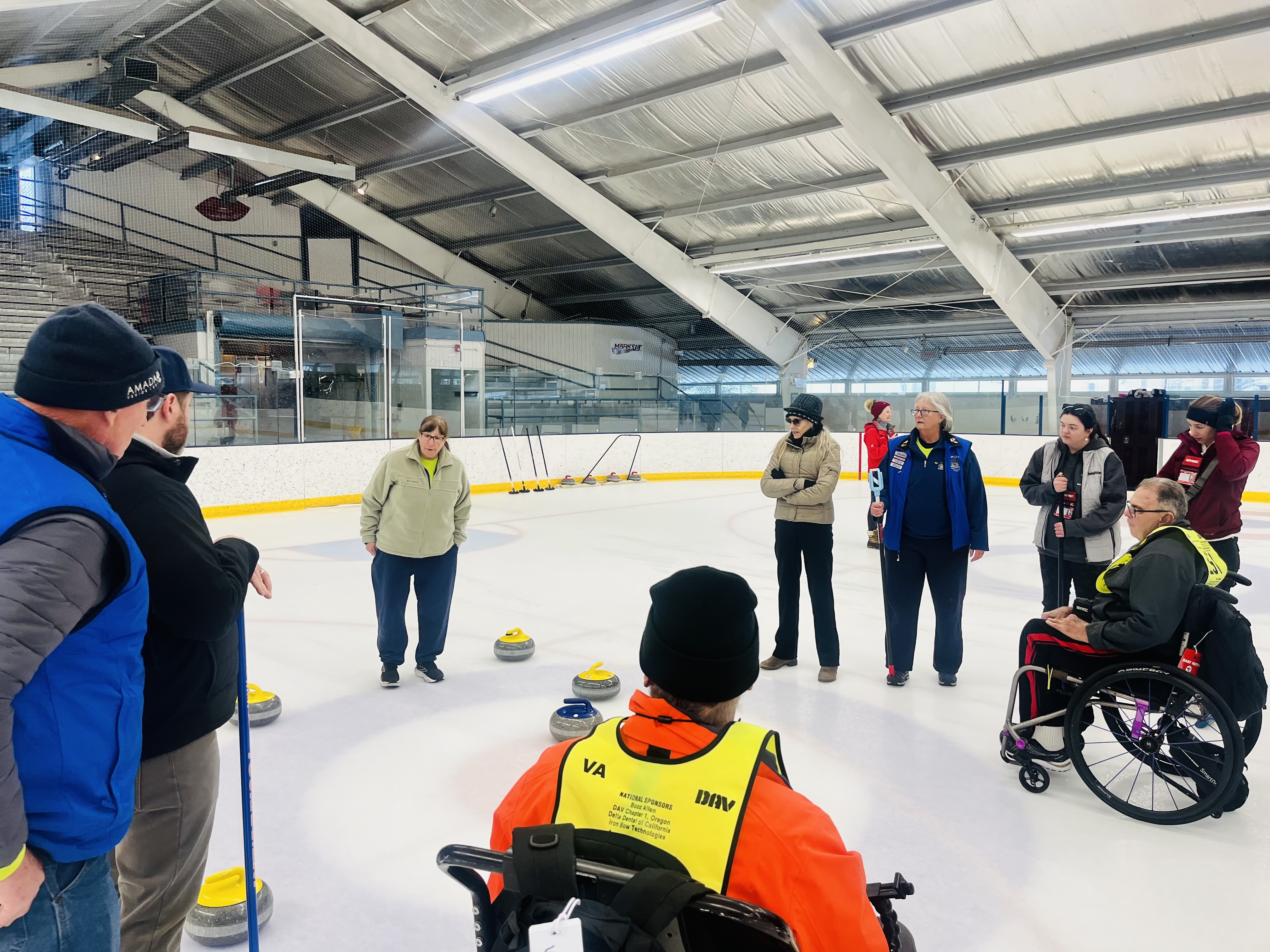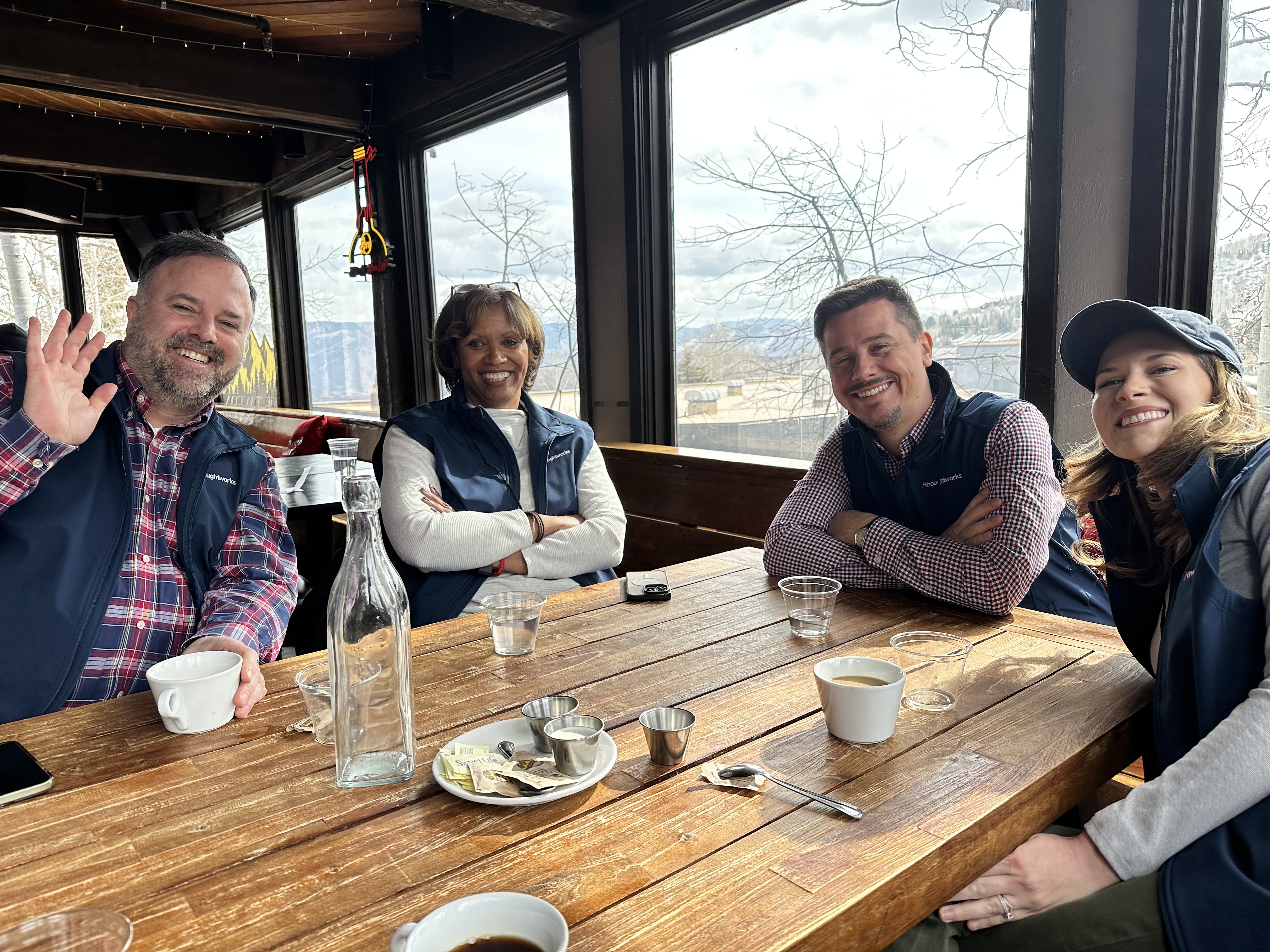This year, Thoughtworks proudly sponsored the National Disabled Veterans Winter Sports Clinic (March 31 – April 5, 2025), a transformative event hosted by the U.S. Department of Veterans Affairs (VA), in partnership with Disabled American Veterans (DAV) and the Office of Information and Technology (VA OIT).
Over the past five years, Thoughtworks has partnered with the VA to build digital products and services to aid the VA in its updated mission of fulfilling “President Lincoln’s promise to care for those who have served in our nation’s military and for their families, caregivers and survivors.” Sponsoring the National Disabled Veterans Winter Sports Clinic event this year gave us the chance to volunteer in service to this community, allowing us to engage more directly with the Veterans that we work to support and build a deeper understanding of their lived experience and needs.
At the Winter Sports Clinic, nearly 400 Veterans came together in Snowmass, Colorado, to experience what many call “Miracles on a Mountainside” — finding strength, joy and connection through adaptive sports like skiing, sled hockey, curling and more.
As volunteers we had the privilege of standing alongside the community we serve, listening to stories, sharing in moments of courage and witnessing the profound impact of an accessible, human-centered experience. It reminded us that the same principles that make this event powerful — dignity, inclusion and connection — are the ones we embed in our work with the VA.
Stepping into the community through immersion and impact
Throughout the week, we quickly saw how thoughtful design shaped every part of the event. Wayfinding and accessibility — through clear signage, mobility accommodations and sensory-friendly spaces — were not afterthoughts, but essentials.
We saw Veterans confidently navigate event spaces, both on and off the mountainside, a testament to the intentional design that prioritized accessibility and was centered around the participant experience. These physical design choices mirrored the same considerations the VA prioritizes in digital environments: inclusive, intuitive and human-centered experiences.
Beyond logistics, what truly stood out was the spirit of community. Whether it was a first-time participant or someone returning for their fifth year, we heard countless stories about how adaptive sports had transformed lives. The energy at the event was electric, rooted in shared experiences, personal triumphs and the joy of doing something extraordinary together.


We watched participants light up when volunteers and sponsors introduced themselves and welcomed them by name, asked about the events they were most excited for and listened to their journey to the Winter Sports Clinic. Between and during activities, story-sharing became the foundation for deepening bonds — across generations, state lines, branches of service and lived experiences. Many moments, big and small, revealed how thoughtful experience design enables meaningful connection.
We also witnessed how support staff continuously adapted, meeting participants and caregivers where they were and ensuring everyone had what they needed to have an incredible experience. And everywhere, there were smiles, laughs, fist bumps and moments of recognition and camaraderie.
During the opening ceremony, a speaker captured the motto of the Winter Sports Clinic perfectly: “Sports is life.” Over the course of the week, we saw how this motto played out, not just in competition, but in community.
Principles that travel: From in-person to in-product
Some of the same design principles we saw in action at the Winter Sports Clinic mirror how we approach digital product development in partnership with the VA.
Empathy-led decisions guided how volunteers and staff met participants’ diverse needs with care and intention. Clear, intuitive experiences helped Veterans navigate the event with confidence. Accessibility wasn’t treated as an add-on — it was embedded from the start, shaping everything from signage to seating arrangements. And above all, the clinic was designed for connection: not just individual participation, but shared experiences that fostered community and belonging.
This spirit echoed our core approach to building digital platforms in partnership with the VA: inclusive, accessible and community-centered by design. Throughout our work — whether building products and services for Veterans themselves, or the people that serve and care for them — we focus on:
- Reducing friction for users navigating high-stakes, complex environments
- Designing for inclusion from the beginning — not as a feature, but as a foundation
- Creating systems that support connection and trust between clinicians, caregivers and Veterans
Immersive, in-person experiences like the Winter Sports Clinic remind us that the principles of good design travel — from mountainsides to digital workflows. They reaffirm why we center real user needs over assumed ones and why design decisions, even the smallest ones, have human impact.
At Thoughtworks and the VA, we believe “by design” isn’t just a phrase — it’s a shared responsibility. Through our partnership, we’re continually learning from one another and strengthening our commitment to intentional, impactful and accessible experiences that serve those who have served.


Five lessons we’re carrying forward
Immersing ourselves in the community we serve, by listening, helping and observing, reinforced the importance of applying a human-centered mindset at every stage, from research to implementation.
We were reminded that social capital and social impact may not always be visible, but they are powerful design forces. Whether in-person or digital, these principles shape how people engage, how trust is built and how inclusive, connected experiences are made.
The Winter Sports Clinic reinforced five essential lessons we’re carrying back into our work and partnership with the VA:
- Accessibility isn’t just about functionality; it’s emotional. It says you belong here.
- Wayfinding in physical and digital spaces shares the same foundation: clarity, empathy, reducing friction.
- People engage more deeply when they feel they belong: when their presence is acknowledged, their voice is heard, and their experiences are valued. That kind of connection can’t be manufactured, it has to be designed for.
- Inclusivity isn’t passive. It’s an intentional choice, embedded into every step of the experience.
- Community is not just something that happens, it’s something we build by design, through the cumulative impact of small, human-centered decisions.


Looking forward: Community, collaboration and continued service
We began the week on a mountainside, alongside hundreds of Veterans, caregivers and volunteers. What we witnessed there — the courage, the joy, the moments of connection and camaraderie — will stay with us. It reaffirmed a belief we carry into our work: that designing with a community is fundamentally different from designing for one. It requires presence, listening, trust and above all, a deep respect and understanding for the people we serve. We left with full hearts, inspired minds and renewed purpose. That’s what happens when design meets service.
The Winter Sports Clinic was a powerful reminder of what’s possible when teams come together across roles, agencies and organizations. Under the leadership of Theresa Parks — and in close partnership with VA OIT, DAV and sponsors like Thoughtworks — the event was not only seamless, but deeply inclusive. It showcased what intentional, cross-functional collaboration can achieve when everyone is aligned around a shared purpose: creating experiences that honor and uplift the Veteran community.
As we look ahead, we remain committed to building accessible, high-impact experiences, whether in digital platforms or physical spaces, that meet people where they are and reflect the diversity of their needs. Moments of connection, empowerment and belonging don’t happen by accident. They happen by design.
Disclaimer: The statements and opinions expressed in this article are those of the author(s) and do not necessarily reflect the positions of Thoughtworks.


















